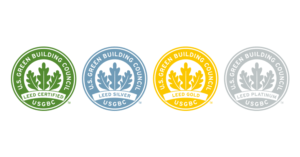Short-term rehab boom: Innovation required
Baby Boomers have transformed many things in America during their lifetimes. Now, they’re changing how we age. They are, on the whole, much more interested than past generations in staying active and keeping their minds and bodies at peak performance well into their 60s and 70s. Recent data show that knee replacement surgeries have doubled in the past 10 years and more than tripled among Americans aged 45 to 64 years. The projected volume of hip surgeries and other joint procedures also is rising. Short-term rehabilitation facilities must be prepared not only for this new volume of patients but also for this new kind of patient.
The average Boomer rehab patient is markedly different from the average rehab patient of 10 or 20 years ago. He or she is generally more educated about replacement surgery and rehab, thanks to the Internet and a freer flow of information. This new patient is more empowered, more likely to question care decisions and seek alternate opinions, and generally be a more active participant in his or her care. The Boomer also expects to remain active, stimulated and social during recovery—not isolated and treated as frail. Given this significant shift in their consumer base, nursing homes must rethink their approach to short-term rehab (and long-term care, for that matter). Boomers will be seeking—and expecting—a lot of it in the coming years.
GREEN HOUSE MODEL
In Chelsea, Mass., the Chelsea Jewish Foundation found that its path to short-term rehab innovation was obvious. In spring 2007, Barry Berman, the foundation’s CEO, became interested in the Green House Project, which has developed a groundbreaking new model for delivering nursing care in skilled nursing facilities across the country.
Each Green House home is designed from the bottom up to look and feel like a real home. In each home, 10 to 12 seniors live in private rooms with bathrooms, and they set their own daily routines. Clinical care is provided by a team of versatile caregivers, all for the same labor cost of running a traditional nursing home.
At the time, no Green House homes were located in the Northeast or in a setting as urban as Chelsea. But Berman immediately thought this was a trail he had to blaze if he wanted to bring the best possible care to his residents. As he began planning to fund and build long-term care (LTC) Green House homes as part of a new community called the Leonard Florence Center for Living, he realized something else. Everything that Barry liked about the Green House LTC model—the layout that was easy to get around and felt just like home, the flexible schedule, the family-like environment—also could make it an ideal setting for short-term rehabilitation. So, he dedicated three of the Green House homes he planned to build as short-term rehab.
GREEN HOME MODEL FOR REHAB
Since opening in 2010, the Leonard Florence Center’s short-term rehab homes have been a successful testament to what’s possible with the Green House model. The proof isn’t just in the good things that Leonard Florence is hearing from elders, referring doctors and care staff—it’s also in the data. On average nationwide, 20 percent of elders return to the hospital within their first 30 days of stay at a nursing home.1 At Leonard Florence, the rate has been half that—around 10 percent. Staff members also have reported an increase in the number of referrals from discharge planners, orthopedic doctors and repeat customers who need new procedures. The more people they send home happy and healthy, the more their customer base expands.
The reason that the Green House Project offers such a strong model for short-term rehab boils down to the concept of home. By making elders feel truly at home, the Green House model actually helps residents rehabilitate faster—and in a safer environment.
Although traditional nursing homes have specific rooms and equipment for use by rehab patients, Green House homes don’t need any—because the approach is holistic. Every feature of a Green House home—the layout, the open kitchen, the private bathroom—resembles what residents will find in their own homes after they recover. So, every move made in a Green House home is practice for the return home.
The rehab is intentionally focused on building practical, transferable life safety skills. By being immersed in what Leonard Florence staff call a “functionality focused” rehabilitation experience, each senior's path to returning home becomes safer, easier and shorter. Green House model environment also may be more conducive to recovery, especially for the lively and engaged Boomer patient. Everything from the communal meals to the small number of elders makes for a tight-knit, supportive atmosphere. In addition, because the elders are on similar paths to recovery, they are able to share in their experiences and motivate one another.
“I’ve been in skilled rehab two times: once at a traditional nursing home and once here in a Green House home. It’s not just the exercise here that gets you well again,” as one senior, Bob Richman, put it. “It’s the people around you having a similar experience. It’s coming together around the table for our meals. It really works.”
GROWING MARKET
With so many Boomers in need of—or nearing the need for—knee, hip and other joint replacements, the market is ripe for a new model. For every adopter, NCB Capital Impact, the national replication organization of the Green House Project offers assistance at each step of the way, including help with financing, regulation, design and staff education. The Green House Project currently has 150 homes in 24 states around the country, but only a few of those homes are being used for short-term rehab. With the market for innovative short-term rehab heading for a boom in growth, may more should exist soon.
David Farrell, MSW, LNHA, is the director of the Green House Project. Before joining the Green House team, Farrell was director of organizational development and regional director of operations for a private nursing home management firm in California. He can be reached at dfarrell@ncbcapitalimpact.org.
REFERENCE
1. American Health Care Association 2012 Quality Report.
I Advance Senior Care is the industry-leading source for practical, in-depth, business-building, and resident care information for owners, executives, administrators, and directors of nursing at assisted living communities, skilled nursing facilities, post-acute facilities, and continuing care retirement communities. The I Advance Senior Care editorial team and industry experts provide market analysis, strategic direction, policy commentary, clinical best-practices, business management, and technology breakthroughs.
I Advance Senior Care is part of the Institute for the Advancement of Senior Care and published by Plain-English Health Care.
Related Articles
Topics: Articles , Design , Executive Leadership , Housing











